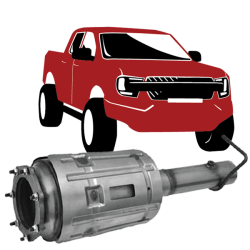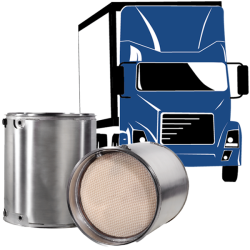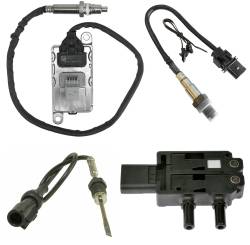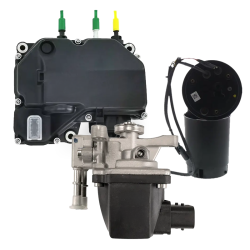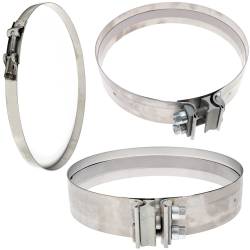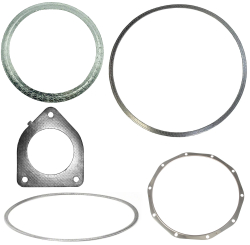- Home »
- Catalog »
- Shop By Auto Part Category »
- Diesel Particulate Filters DPF, Diesel Oxidation Catalysts DOC, Selective Catalytic Reduction SCR
Dales Super Store - Diesel Particulate Filters DPF, Diesel Oxidation Catalysts DOC, Selective Catalytic Reduction SCR
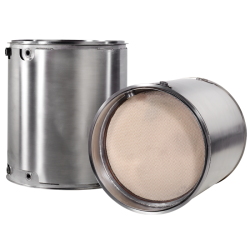
Emissions
SCRs, Sensors and More
Select a Sub-Category
More About Diesel Particulate Filters DPF, Diesel Oxidation Catalysts DOC, Selective Catalytic Reduction SCR
Diesel truck emissions pose an environmental impact due to adding to air pollution. To address the issue, various emissions control technologies have been developed, including Diesel Particulate Filters (DPFs), Diesel Oxidation Catalysts (DOCs), and Selective Catalytic Reduction (SCR) systems. This makes it a three part system.
DOCs are the first part in the three part system. These are catalysts that oxidize harmful pollutants, such as carbon monoxide (CO) and hydrocarbons (HC), converting them into less volatile elements like carbon dioxide (CO2) and water vapor. DOCs reduce these pollutants, and enhance the overall environmental performance of diesel engines.
DPFs are the next component of the three part aftertreatment system that captures and removes particulate matter emissions from exhaust. These filters are made of substrate that captures and stores soot produced during combustion. The built up soot is burned off through regeneration, which cleans the DPF filter. DPFs reduce particulate matter in diesel exhaust, to improve air quality, and mitigate risks from particulate matter / PM.
SCR systems work differently to control emissions by reducing nitrogen oxide (NOx). These systems inject Urea / Diesel Exhaust Fluid (DEF), typically consisting of urea and water, into the exhaust stream. The DEF / Urea reacts with NOx in the presence of a catalyst, typically a SCR catalyst, converting the NOx into nitrogen gas and water vapor. The SCR system offer significant NOx reductions, making it an effective technology for meeting current emissions standards.
The combined use of DPFs, DOCs, and SCR in the three part system is standard in modern diesel engines. Together, these parts work together to limit pollutants and meet current emissions standards. They provide a comprehensive approach to reducing particulate matter, CO, HC, and NOx emissions. This helps to improve air quality and the environmental impact of diesel-powered vehicles and equipment.
The parts we offer come from brands you know and trust like Cummins, Skyline, Dinex, AP / Durafit, MOPAR, Ford OEM and RoadWarrior. We offer emissions parts in new, aftermarket, OEM and remanufactured type and conditions. We have catalysts, gaskets, clamps, coolers, filters, sensors and more. If we do not have what you are looking for contact us directly.
We are unable to ship any non-CARB compliant part to CA.
Welcome to the largest catalog of Diesel Particulate Filters (DPF), Diesel Oxidation Catalysts (DOC), and Selective Catalytic Reduction (SCR) for light, medium and heavy duty engines. We carry emission parts for all major vehicle manufacturers such as Ford, Dodge, GM, International, Mercedes Benz, Mack, Volvo, Paccar, and Cummins as examples. We offer both new and remanufactured diesel particulate filters and more.
What is a DPF?
The term DPF stands for Diesel Particulate Filter, a key component in the aftertreatment emissions control systems of modern diesel vehicles. DPFs are designed to capture and remove particulate matter, or soot, from exhaust gas being produced during combustion.
How Does It Work?
As diesel engines burn fuel, they generate tiny particles of soot, which can contribute to air pollution and have negative health effects. DPFs act as filters, trapping these particles within their porous structure, while allowing clean exhaust gases to pass through.
A DPF operates in two main ways: regeneration and cleaning. During normal operation, the DPF collects and stores the trapped soot particles. As the amount of soot builds up, the DPF requires regeneration to burn off the accumulated soot and keep the filter clean.
What is Regeneration?
Regeneration can occur passively or actively. Passive regeneration happens naturally during extended periods of highway driving or higher exhaust temperatures, where the heat from the exhaust gases is sufficient to burn off the trapped soot. Active regeneration, on the other hand, involves the engine management system intentionally raising exhaust temperatures through various means, such as post-injection of fuel or increasing exhaust backpressure, to initiate the cleaning process.
If the soot accumulation reaches a certain threshold or if passive regeneration opportunities are limited, active regeneration may be necessary. In some cases, vehicles may require manual regeneration through diagnostic tools or dealer intervention.
What should I Do?
Regular maintenance and proper care of DPFs are essential to ensure their optimal performance and longevity. This includes following manufacturer-recommended service intervals, using the correct type of diesel fuel, and avoiding short, low-speed trips that hinder proper regeneration.
Wht Is It Important?
In addition to their environmental benefits, DPFs contribute to meeting strict emissions standards by reducing the emission of particulate matter from diesel vehicles. They play a significant role in improving air quality and reducing the impact of diesel exhaust on public health.
It is important to note that tampering with or removing a DPF is illegal in many regions and can result in fines or penalties. Proper maintenance and adherence to emissions regulations are crucial to ensure compliance and contribute to a cleaner and healthier environment.


